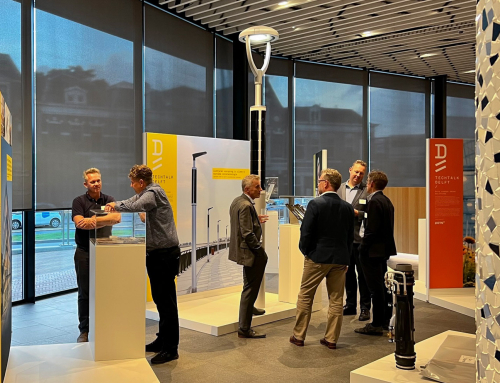
More FlexSol products, more solutions, more innovation
It’s 2020 already! But the team of FlexSol hasn’t been idle. The upcoming months we’ll be highlighting all our new innovative solar products.
We are always focusing on bringing you the most innovative and sustainable lighting solutions on the market. For example, our Solar Wildlife Friendly lighting solution! Artificial lighting has brought us as humanity lots of beneficial developments. But for many animals, such as bats, turtles and birds, artificial lighting can be a real nuisance.
Turtle-friendly
Thousands of animals that live on land or in the air are being disrupted in their natural behavior. They get trapped in bad or unnecessary lighting. For example, sea turtles need to navigate to the sea in order to survive. They do this by following the light of the moon. But when artificial lighting disrupts them, they crawl land inwards instead. Artificial lighting also confuses animals, which makes it impossible for them to find food. And the night and day pattern of animals that live during nighttime gets altered as well. This leaves them stressed and out of their natural habitat.

Nasa Marble Map of city lights of the United States 2012
The Three Principals
To realize artificial lighting which is also animal and environmental friendly, we implement 3 principals.
Keep it LOW
Keep it LONG
Keep it SHIELDED
This means that lighting should always be placed as low as possible, so unnecessary light doesn’t get emitted where you don’t need it. For this reason FlexSol’s Wildlife Friendly solar edition has a maximum of 4 meters to minimize this light trespass.
Next to this the wavelengths in the FlexSol’s Wildlife Friendly lighting are longer than 560 nanometers. As a result the color of the light varies from orange to red.
And at last the lighting should always be shielded. This implies that unnecessary glaring lenses aren’t seen from the sky. Like in the picture, the blue light (wrong color nonetheless) only shines down on the ground, where you need it. The red one also emits light into the sky and has almost no effective light on the ground where it is necessary.
Bat-friendly
The implementation of shielded light is also beneficial for bats and migrating birds. They navigate by moonlight and starlight. Artificial light can cause them to wander off course and towards the dangerous nighttime landscapes of cities.
Downwards and at the sides shielding also prevents glowing lenses to be seen by animals on ground. This cuts down the amount of light visible to animals, which minimizes the chances of them getting repelled from or attracted to the light. Also the night and day rhythm of nocturnal animals won’t change.

Example of effective and ineffective lighting
Motion Sensor Option
After all, no light is the best solution for not disturbing the natural habitat of animals. Unfortunately there is no substitute for a naturally dark habitat, consequently turning off unnecessary lighting is the most effective. Therefore, FlexSol’s Wildlife Friendly edition has the possibility to be equipped with a motion sensor. This way, FlexSol offers light in situations that demand lighting. But when light isn’t necessary, the light is turned off automatically which leaves the natural habitat as unaffected as possible.
Light pollution is a worldwide problem that deserves much more attention than it does now, this is why FlexSol has a specific line of solar lighting which focuses primarily on being as wildlife friendly as possible. FlexSol’s Wildlife Friendly edition is designed along the guidelines of the Fish and Wildlife conservation commission certification. Our other solar solutions, such as the WiFi and communication poles, can also be equipped with wildlife friendly lighting.
Environmental friendly lighting is a real necessity to keep our planet livable for every living creature existing on it.
Interested in more information about our wildlife friendly solar lighting? Have a look at our Soluxio Wildlife friendly lighting page and discover all the benefits of the Wildlife Friendly edition. Or take a look at our other blogposts on our FlexSol page.




